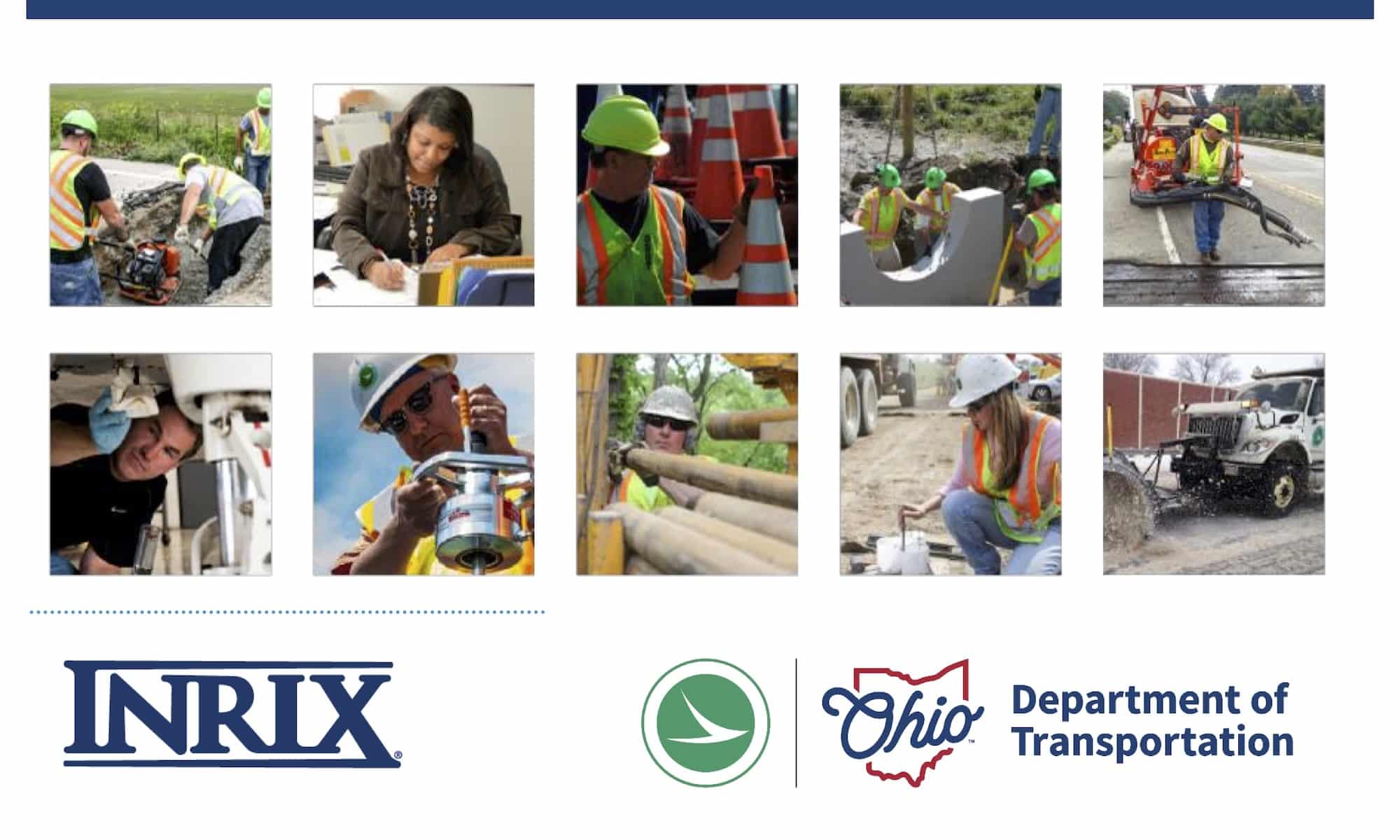
When transportation agencies consider implementing new data solutions, they often focus on specific use cases or departments. But what happens when an agency fully embraces data-driven decision making across their entire organization?
The Ohio Department of Transportation (ODOT) provides a compelling answer, having integrated INRIX traffic data into nearly every aspect of their transportation management process.
From initial planning through maintenance operations, INRIX traffic data has become an essential tool powering ODOT’s decision-making and performance measurement. The department leverages historical traffic data across almost every part of their workforce to drive better outcomes as ODOT works to keep Ohio’s roads safer and more efficient:
- Planning
- Programming
- Data Management
- Construction
- Operations
- Maintenance
- Research
Planning: Data-Driven Project Identification
ODOT has planning processes leveraging their custom Traffic Operations Assessment System Tool (TOAST), which uses INRIX historical data to identify and prioritize operational needs across the state. This innovative system:
- Analyzes travel time reliability and bottleneck patterns
- Identifies corridors needing operational improvements
- Provides data-backed justification for TSMO investments
- Powers TSMO studies that shape future projects
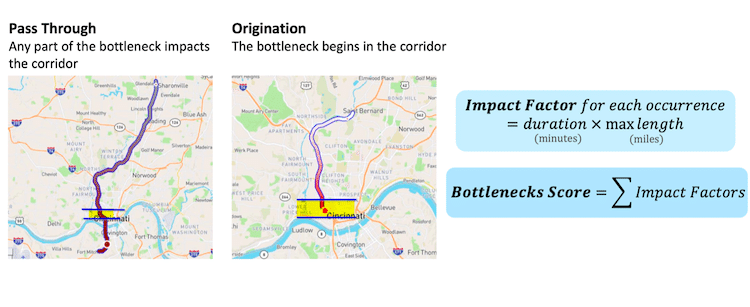
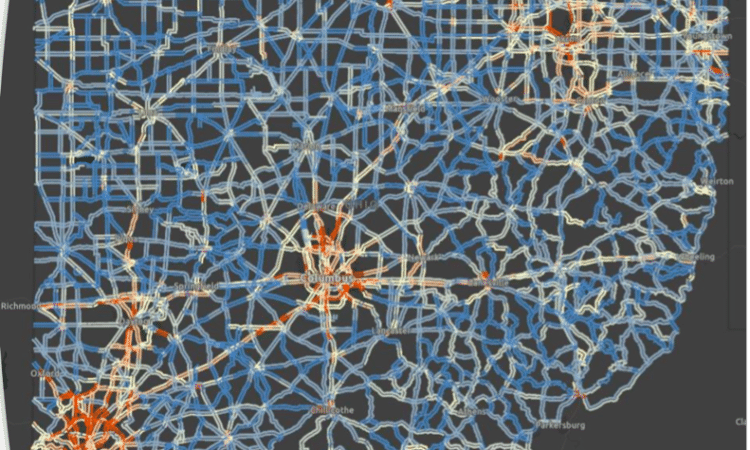
Programming: Powering Multi-Million Dollar Investment Decisions
The ODOT TSMO study process uses insights from INRIX data to uncover practical solutions to address transportation problems. These studies have been informing ODOT’s TSMO capital program, helping to:
- Prioritize projects based on quantifiable needs
- Justify millions in annual TSMO investments
- Track and report program performance
- Demonstrate clear returns on investment through before/after studies
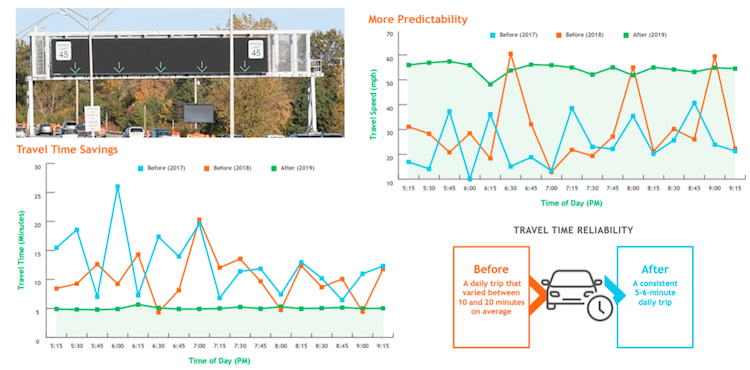
Construction: Real-Time Work Zone Performance Monitoring
During construction, ODOT leverages INRIX data to monitor work zone impacts through “volcano-gram” visualizations (see figure below). These graphics visualize congestion approaching and throughout the work zone—and compare the congestion to conditions before the work zone was put in place. These “at a glance” visualizations allow ODOT work zone coordinators to easily identify where work zones may be impacting mobility and adjust the traffic management strategies.
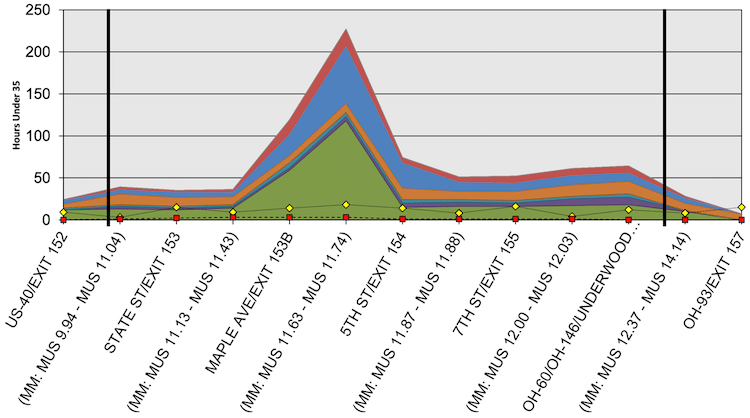
Data Management & Innovation: Building a Digital Foundation
At the core of ODOT’s data-driven approach is their TSMO data warehouse, which:
- Processes over 79 million daily INRIX speed records
- Powers automated performance dashboards
- Enables custom analytics and visualization
- Supports data-sharing across applications and departments
The implementation of the TSMO data warehouse, along with other automation and scripting tools, has saved ODOT staff hundreds of hours of manual effort in monitoring system performance.
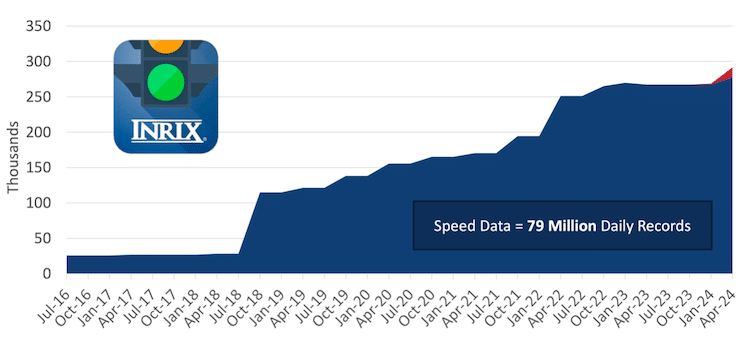
Operations: Enhancing Daily Traffic Management
ODOT’s TSMO staff rely on INRIX data to monitor smart corridor performance, guide Safety Service Patrol deployment, and evaluate effectiveness of each operational strategy. For example, this dashboard provides a detailed look into how ODOT’s I-275 hard shoulder running operation is performing.
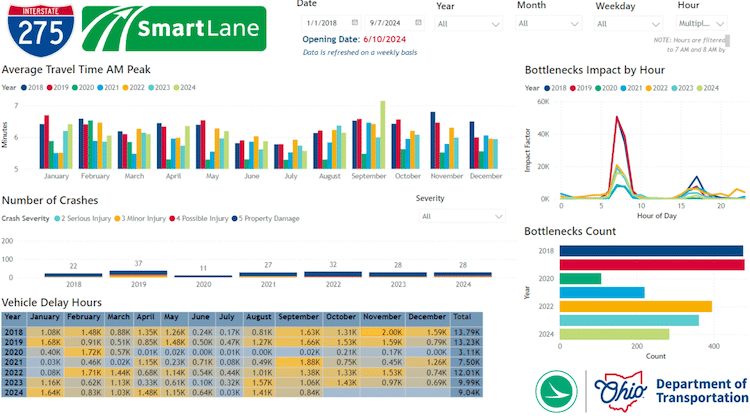
Maintenance: Award-Winning Winter Operations
Perhaps one of the most innovative applications is ODOT’s patented Snow and Ice Performance Evaluator (SNIPE). This groundbreaking system compares real-time speeds to historical patterns derived from INRIX data to assess winter weather impacts and recovery. By establishing clear performance metrics for maintenance staff and guiding resource allocation, SNIPE helps ODOT optimize their winter operations and improve public safety during severe weather conditions. The system is so innovative that ODOT obtained a patent for their unique approach of combining speed data with weather information to measure winter maintenance performance.


Research: Measuring Impact Through Data
How do you measure the true impact of millions of dollars in transportation investments? For ODOT, the answer once again lies in data.
Building on their data-driven approach, ODOT leverages INRIX historical traffic data extensively to measure and validate the impact of their transportation investments. Through comprehensive before-and-after studies, the agency quantifies improvements across a wide range of projects, including:
- Smart Lane implementations
- Signal retiming corridors
- Safety projects
- Queue warning systems
These analyses are strengthened through university partnerships, where researchers use INRIX data to analyze congestion patterns, evaluate safety correlations, and assess the impacts of ODOT’s various operations.
Furthermore, the agency uses this data to validate project benefits and costs, supporting grant applications with concrete performance metrics that guide future investments. For example, ODOT’s signal timing BC dashboard provides a clear visualization of these metrics, enabling data-driven decision-making for upcoming projects.
This data-driven approach to research and validation helps ensure ODOT’s transportation investments deliver measurable benefits and continually improve their system’s performance.
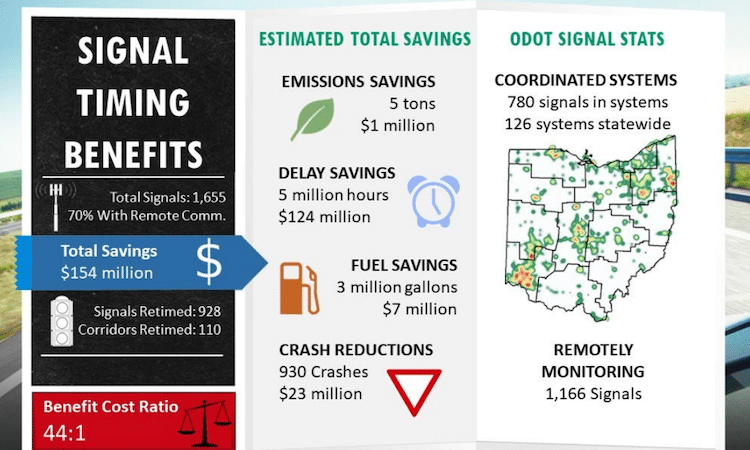
Integration Drives Success
What makes ODOT’s approach particularly powerful is how these different applications of INRIX data work together. The same historical data that helps identify needed improvements also validates their effectiveness, guides day-to-day operations, and measures long-term performance. Several elements have been crucial to ODOT’s successful implementation:
- Comprehensive data coverage across their entire road network
- Consistent historical archives enabling reliable comparisons
- Intuitive analytics tools that empower existing staff
- Flexible integration capabilities supporting multiple applications
- Proven accuracy validated through years of operational use
Looking Ahead
As ODOT continues to innovate, they are always exploring new applications of INRIX historical traffic data including:
- Predictive analytics for operations
- More targeted program-specific metrics
- Enhanced safety analysis capabilities
- Automated performance reporting
- Advanced congestion management strategies
ODOT’s examples demonstrate how traffic data, when fully embraced and integrated across an organization, can transform transportation management from reactive to proactive, leading to better outcomes for all motorists.
Want to learn how INRIX traffic data can drive similar improvements across your organization? Contact us at sales@inrix.com or visit inrix.com/products/traffic to learn more.




